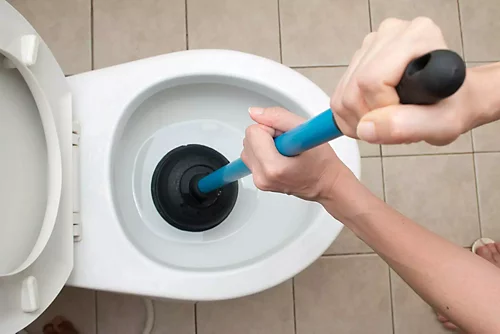A clogged toilet can turn from a minor annoyance into a full-blown plumbing disaster if not handled correctly. Whether it’s the aftermath of a large meal, too much toilet paper, or an issue deep in the pipes, you’re not alone in wondering why this keeps happening. To help you regain control of your bathroom, we asked plumbing experts for their most reliable fixes and insights into one surprisingly common question: why do I keep clogging the toilet?
Understanding Why Toilets Clog
Before reaching for a plunger, it helps to know what causes clogs in the first place. According to plumbing professionals, most blockages result from a combination of improper flushing habits and plumbing system inefficiencies. Common culprits include excessive toilet paper, foreign objects (like wipes or hygiene products), and older low-flow toilets that lack flushing power.
Sometimes the problem lies beyond your control. Tree roots can invade underground pipes, or mineral buildup may narrow the pipe’s diameter. Understanding the cause helps you choose the best fix—and prevent future blockages.
Step 1: The Classic Plunger Method
When your toilet bowl starts to rise ominously, a plunger should be your first line of defense. But there’s a technique to doing it right. Experts recommend using a flange plunger, which is specifically designed for toilets. It creates a strong seal around the drain to maximize suction.
To use it properly, ensure the plunger’s rubber cup is submerged in water. Push down gently to release trapped air, then pump vigorously about 15 to 20 times. The suction and pressure changes should dislodge most blockages. Once you hear the familiar gurgle of water draining, give it one more flush to confirm the clog is gone.
If you find yourself plunging frequently, that’s a red flag. You might start asking, why do I keep clogging the toilet? The answer could be as simple as using too much paper or as complex as an issue with your home’s plumbing vent system.
Step 2: Try a Plumbing Snake
If plunging doesn’t do the trick, it’s time to bring out the next tool in the expert’s arsenal—the toilet auger or plumbing snake. This flexible, coiled tool reaches deeper into the drain to break apart stubborn clogs that plungers can’t reach.
To use it, insert the tip into the toilet bowl and crank the handle slowly. The snake will move through the drain and either push through or grab the obstruction. Once it’s clear, retract the snake and flush to confirm success.
Professional plumbers warn against using wire hangers or makeshift tools. They can scratch the porcelain or damage internal components, turning a simple clog into a costly repair.
Step 3: Hot Water and Dish Soap Trick
For partial clogs or slow-draining toilets, you might not need tools at all. Many pros recommend the hot water and dish soap trick. Pour a generous amount of dish soap into the toilet bowl, followed by a bucket of hot (not boiling) water. The soap lubricates the pipe, while the heat helps dissolve greasy buildup or organic waste.
Let the mixture sit for about 15 minutes, then flush. This gentle method often clears softer clogs and is especially useful for people who want to avoid harsh chemicals.
Step 4: Use Enzyme-Based Cleaners
If you’d rather take a preventive approach, consider using enzyme-based drain cleaners. These eco-friendly products use natural bacteria to break down organic waste inside pipes, helping prevent future clogs. Unlike chemical drain cleaners, they won’t corrode your plumbing or harm septic systems.
Use them monthly for best results, especially if your household frequently deals with slow drains. Over time, enzyme cleaners can reduce buildup that contributes to chronic clogs.
Step 5: Address Low-Flow Toilet Issues
Older low-flow toilets (manufactured before 2000) were designed to save water, but early models often lacked the power needed to flush waste effectively. This can leave residue in the pipes, leading to repeated blockages.
Plumbers suggest upgrading to a modern high-efficiency toilet that combines water conservation with improved pressure technology. Today’s models are engineered to handle larger loads while using less water, making them both eco-friendly and clog-resistant.
If replacing your toilet isn’t an option, try holding the handle down longer when flushing to allow more water to enter the bowl. This can help push waste through the trap more effectively.
Step 6: Inspect the Plumbing Vent
Clogs aren’t always caused by what goes down the toilet—sometimes the problem is air. Toilets rely on a vent pipe (usually leading to the roof) to regulate air pressure in the drain system. If that vent becomes blocked by leaves, bird nests, or debris, the toilet loses flushing power and clogs more easily.
If you’ve tried every other fix without success, it might be time to inspect your vent pipe. You can clear minor obstructions yourself using a garden hose or plumber’s snake, but for safety reasons, many homeowners hire a professional for this job.
Step 7: Watch What You Flush
This may sound obvious, but the only things that should go into your toilet are human waste and toilet paper—nothing else. Despite labels claiming “flushable,” wipes, paper towels, cotton balls, and feminine hygiene products can all cause serious clogs. These items don’t break down easily and often get stuck in bends or join with grease to form solid blockages.
To prevent temptation, keep a small covered trash bin near your toilet for disposable items. Teaching kids and guests proper flushing etiquette can also go a long way toward keeping your pipes clear.
Step 8: Check for Underlying Plumbing Problems
If your toilet seems to clog every few days, even when you’re careful, the issue may lie deeper in your plumbing system. A partially blocked main sewer line can cause multiple drains in your home to back up simultaneously. In older homes, tree roots are a common cause, as they infiltrate the pipes through tiny cracks.
You might also have a septic tank that needs to be pumped. When the tank is full, waste has nowhere to go, forcing it back through the pipes. Both problems require professional attention, but addressing them early can prevent major damage and costly repairs.
Expert Advice: When to Call a Plumber
DIY methods work well for minor or occasional clogs, but some situations demand expert help. Call a plumber if you experience:
- Repeated clogs in a short time
- Gurgling sounds from other drains when you flush
- Water backing up into sinks or showers
- Foul odors from the toilet or drain
Professionals have specialized equipment like hydro-jetting machines and video inspection tools that can locate and clear blockages safely.
Preventing Future Toilet Clogs
The best fix is prevention. Here are a few expert-approved tips to keep your toilet running smoothly year-round:
- Use less toilet paper. Try flushing midway if you need to use more than usual.
- Flush twice when necessary. It’s better to use a little extra water than risk a clog.
- Keep the tank clean. Regular cleaning prevents mineral buildup that can restrict water flow.
- Schedule maintenance. Have a plumber inspect your system annually, especially if your home is older.
- Avoid chemical drain cleaners. They can erode pipes and damage seals, making future clogs more likely.
By combining smart habits with regular upkeep, you’ll extend the life of your plumbing and save yourself a lot of stress.
Why Do I Keep Clogging the Toilet?
If you’ve found yourself wondering, “why do I keep clogging the toilet,” you’re far from alone. The answer usually comes down to three main factors: flushing habits, toilet design, or plumbing condition. Using too much paper, flushing non-degradable items, or owning an older toilet are all top contributors. Sometimes, though, chronic clogs point to deeper plumbing problems like a blocked vent or sewer line.
The good news is that most causes can be fixed with a few adjustments or professional maintenance. Once you identify the root of the problem, you can stop worrying about future overflows and enjoy a stress-free bathroom routine.
Final Thoughts
A clogged toilet isn’t just inconvenient—it’s a sign that something in your plumbing system needs attention. With these expert tips, you’ll be able to tackle minor blockages quickly, recognize when to call for help, and make small changes that prevent future problems. Whether it’s a simple plunger fix or a full plumbing inspection, understanding why you keep clogging the toilet is the key to lasting peace of mind and a healthier home.





























